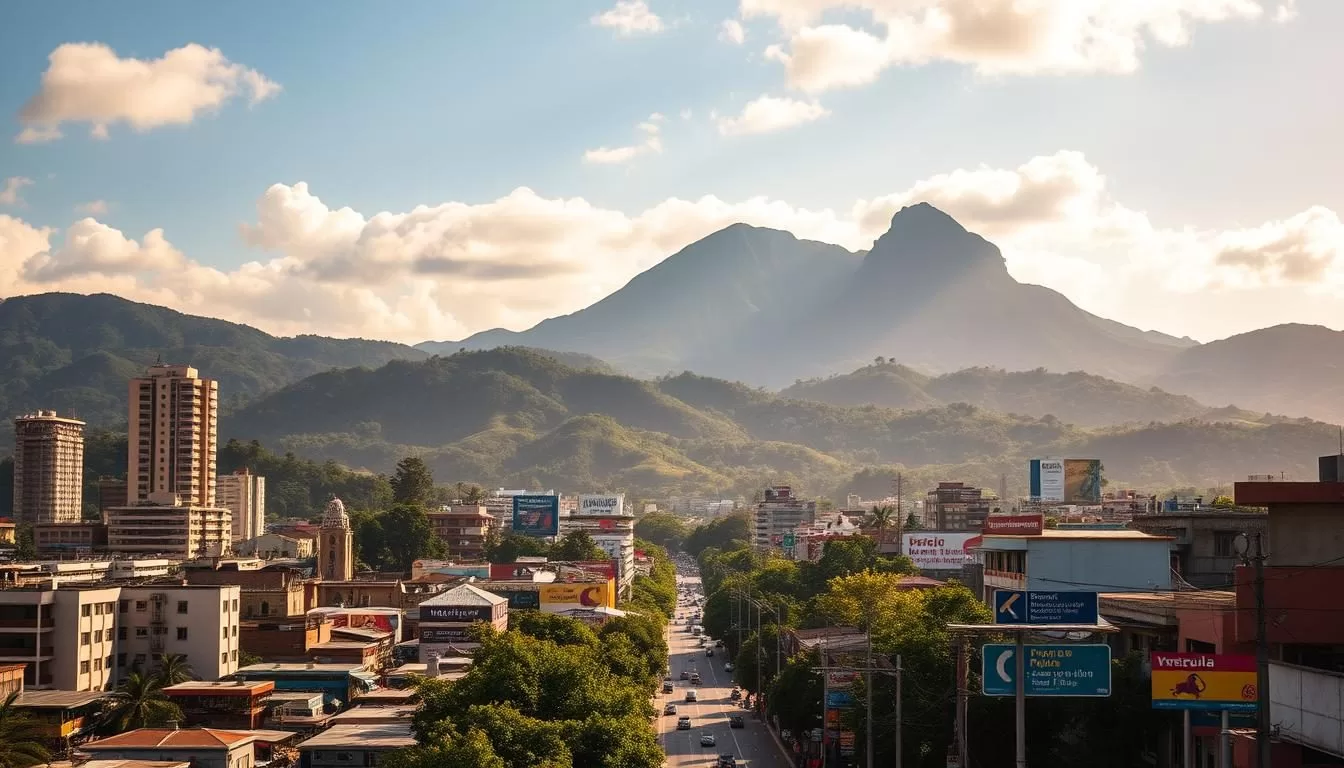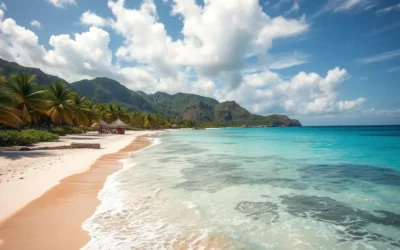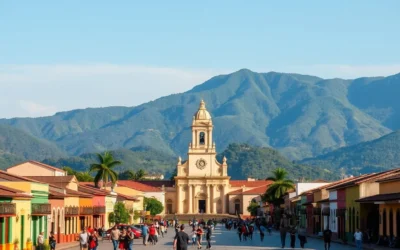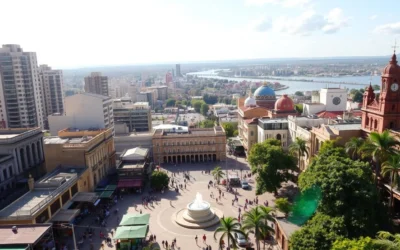✓ Accommodations✓ Flights✓ Rental Cars
When you think of this South American country, its vibrant culture and rich history come to mind. At the heart of its identity lies its primary language. Spanish is the official language, spoken by about 95% of the population. This linguistic heritage shapes daily life, from bustling cities to serene regions.
Venezuelan Spanish carries a unique Caribbean flair, setting it apart in the world of languages. It’s not just a means of communication but a reflection of the country’s diverse culture. Beyond Spanish, the constitution recognizes over 30 indigenous languages, showcasing the nation’s linguistic diversity.
Understanding the language spoken here offers a glimpse into the soul of this South American nation. Whether you’re exploring its cities or learning about its history, language plays a pivotal role in connecting with its people and culture.
Introduction to Venezuela’s Linguistic Landscape
Nestled in the northern part of South America, this nation boasts a rich cultural tapestry shaped by its diverse linguistic heritage. With a population of over 30 million, it is a country where Spanish dominates as the primary language, spoken by the majority of its people. However, the linguistic scene here is far from monolithic.
Caracas, the capital city, is a hub of cultural and linguistic exchange. Here, you’ll find a blend of traditional and modern influences. Beyond Spanish, the constitution recognizes 26 regional indigenous languages, reflecting the nation’s commitment to preserving its cultural roots.
Venezuela at a Glance
This South American country covers an area of 916,445 square kilometers, making it one of the larger nations in the region. Its diverse geography, from coastal plains to mountainous regions, mirrors its linguistic diversity. The population is a mix of ethnic groups, including multiracial, White, and Afro-Venezuelan communities.
Exploring the Multilingual Environment
Everyday language here reflects the cultural mix of its people. Indigenous tongues like Wayuu and Warao are still spoken in certain regions, while immigrant communities contribute languages such as Italian, Portuguese, and Arabic. This multilingual environment is a testament to the nation’s historical and cultural evolution.
| Language | Region | Speakers |
|---|---|---|
| Spanish | Nationwide | 95% |
| Wayuu | Zulia | 300,000 |
| Warao | Delta Amacuro | 28,000 |
Understanding the linguistic landscape offers a deeper connection to its people and culture. Whether you’re visiting or studying, this fact enriches your experience in this vibrant world.
History and Cultural Influence on Venezuelan Languages
The linguistic roots of this South American nation are deeply tied to its colonial past and cultural evolution. Spanish colonization left a lasting mark on the language spoken here, shaping its vocabulary and pronunciation. This colonial legacy is still evident in everyday communication, from formal settings to casual conversations.
Colonial Legacy and Language
When Spanish colonizers arrived in the 16th century, they introduced their language, which eventually became dominant. The Real Compañía Guipuzcoana de Caracas, established in 1726, played a key role in shaping trade and cultural exchanges, further embedding Spanish into daily life. Independence in 1821 marked a turning point, but the colonial word structures remained deeply ingrained.
Influence of Indigenous and African Languages
Indigenous groups like the Timoto-Cuica and African slaves brought their own linguistic traditions, enriching the language with unique sounds and expressions. Today, over 30 indigenous tongues are still spoken, particularly in rural regions. This blend of influences makes the country’s linguistic landscape one of the most diverse in the world.
Understanding Venezuelan Spanish
Venezuelan Spanish stands out with its unique Caribbean flavor and distinct pronunciation. This language is not just a means of communication but a reflection of the country’s vibrant culture. Whether you’re a traveler or a language enthusiast, understanding these nuances can enrich your experience.
Distinctive Pronunciation and Vocabulary
One of the most notable features of Venezuelan Spanish is the aspirated “s.” This pronunciation quirk is common in urban areas and adds a unique rhythm to the language spoken here. Words like “más” often sound like “mah,” giving it a distinct Caribbean touch.
Vocabulary also sets Venezuelan Spanish apart. Everyday words and phrases often differ from those used in other Spanish-speaking regions. For example, “carro” is used instead of “coche” for car, and “chévere” means cool or great.
Caribbean and Central American Influences
The Caribbean and Central American influence is evident in both pronunciation and vocabulary. The melodic intonation and relaxed speech patterns are hallmarks of this region. These traits make Venezuelan Spanish easily recognizable.
Historical ties to these regions have also shaped the language. Words borrowed from indigenous and African languages add depth and variety. This blend of influences creates a rich linguistic tapestry that reflects the country’s diverse heritage.
| Feature | Example | Influence |
|---|---|---|
| Aspirated “s” | más → mah | Caribbean |
| Vocabulary | carro (car) | Central American |
| Intonation | Melodic speech | Caribbean |
Understanding these subtle differences can help you connect more deeply with the person you’re speaking to. Whether you’re in a bustling city or a quiet home, these linguistic traits are a window into the soul of the country.
Venezuela: Official and widely spoken languages
In this South American nation, language is more than just communication—it’s a cornerstone of cultural identity. The constitution grants official status to Spanish, spoken by the vast majority of the population. This legal recognition ensures that the language spoken here remains a unifying force across the country.
Beyond Spanish, the constitution also supports over 30 indigenous languages, reflecting the nation’s commitment to preserving its diverse heritage. These languages are not just a means of communication but a vital part of the cultural fabric in their respective regions.
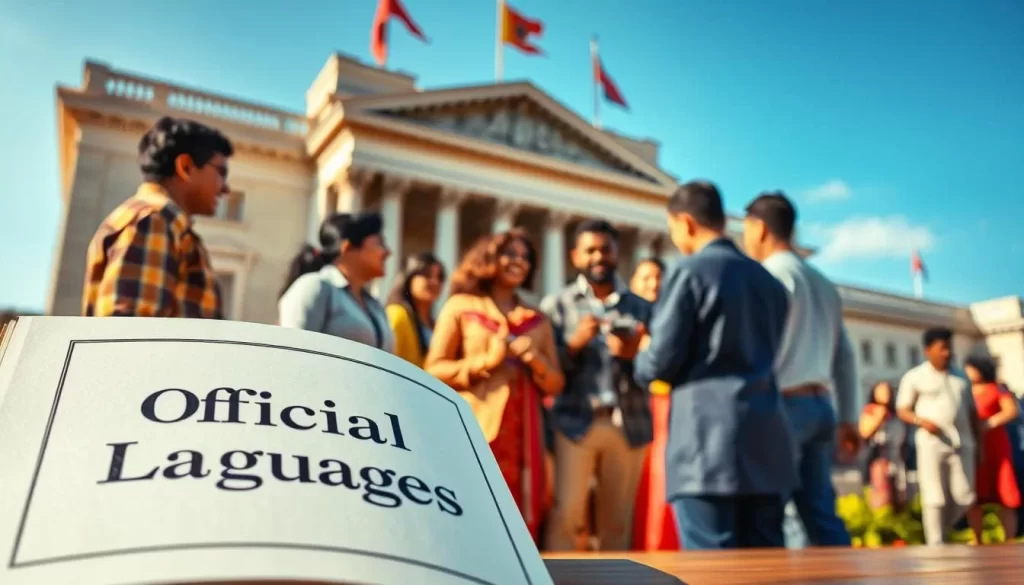
This dual recognition of Spanish and indigenous languages plays a crucial role in fostering cultural identity. It ensures that every word spoken carries the weight of history and tradition. For many, this legal framework is a source of pride and a reminder of the nation’s rich linguistic diversity.
Language laws here go beyond mere policy—they reinforce the country’s cultural and political narrative. By protecting indigenous languages, the constitution helps maintain a connection to ancestral roots. This approach highlights the importance of language as a defining element of national identity in South America.
Indigenous Languages: Diversity Beyond Spanish
Beyond Spanish, this South American nation is home to a vibrant tapestry of indigenous languages that reflect its deep cultural roots. These languages are not just a means of communication but a vital part of the country’s identity. Over 30 indigenous tongues are recognized, each carrying its own unique history and significance.
Overview of Indigenous Language Families
Indigenous languages here belong to several major families, including Arawak and Carib. These families represent the linguistic diversity that has thrived for centuries. Each family includes multiple languages, many of which are still spoken today in specific regions.
For example, the Arawak family includes languages like Wayuu, while the Carib family features Warao. These languages are deeply tied to the cultural practices and traditions of their communities.
Key Indigenous Languages in Venezuela
Wayuu, spoken by over 300,000 people, is one of the most prominent indigenous languages. It is primarily used in the Zulia region. Warao, with around 28,000 speakers, is another significant language, mainly found in Delta Amacuro.
These languages are not just historical artifacts but living systems of communication. They play a crucial role in preserving the cultural heritage of their communities.
- Wayuu: Over 300,000 speakers in Zulia.
- Warao: Approximately 28,000 speakers in Delta Amacuro.
- Pemon: Spoken in the Gran Sabana region.
Understanding these languages offers a deeper connection to the country’s cultural fabric. Whether you’re a researcher or a traveler, this information enriches your experience.
Foreign Languages and Immigrant Influences
The linguistic diversity of this South American nation extends beyond its borders, shaped by waves of immigration. Immigrant communities have brought their own languages, enriching the cultural and linguistic landscape of the country. From Chinese to Portuguese, these foreign tongues have found a place in everyday life, professional settings, and tourism.
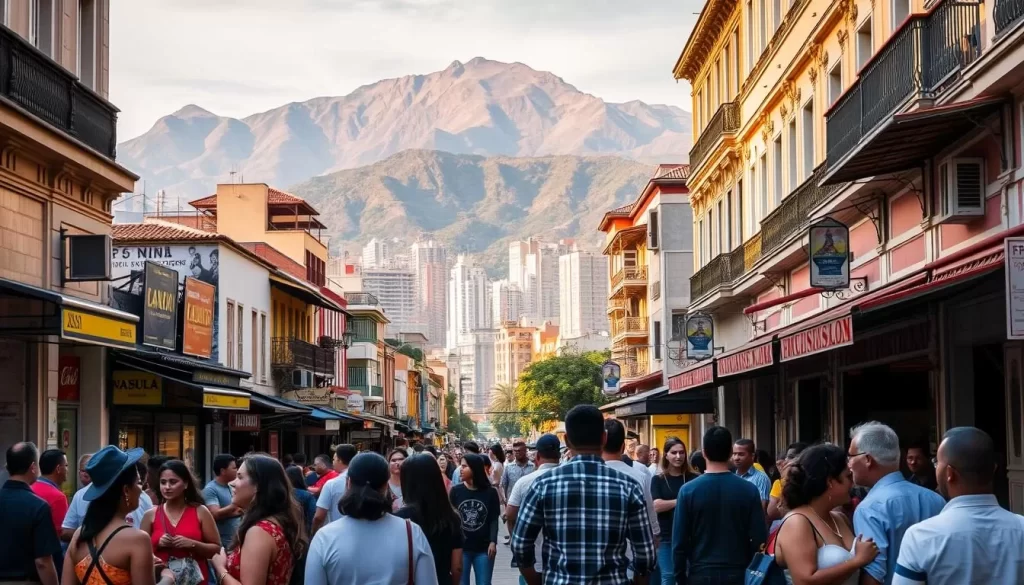
Impact of Immigrant Communities
Immigrant groups have significantly influenced the language scene here. For example, Chinese is spoken by around 400,000 people, primarily in urban areas. Portuguese, with approximately 250,000 speakers, is another prominent immigrant language, reflecting the close ties with neighboring Brazil.
Italian is also widely spoken, especially among descendants of European immigrants. These languages have not only enriched local vocabulary but also contributed to slang and everyday expressions.
Role of English and Other Languages
English has gained importance in professional and tourism sectors. Many businesses and educational institutions use English to connect with the global community. This trend is particularly evident in cities like Caracas, where English is often taught as a second language.
Other foreign languages, such as Arabic and French, are also spoken, though to a lesser extent. These languages reflect the multicultural environment of the country, where diversity is celebrated.
| Language | Speakers | Primary Regions |
|---|---|---|
| Chinese | 400,000 | Urban Areas |
| Portuguese | 250,000 | Border Regions |
| Italian | 50,000 | Major Cities |
Immigrant influence has created a vibrant, multilingual environment. This diversity is a testament to the country’s ability to embrace and integrate different cultures. To learn more about the immigration and ethnic composition, explore this detailed resource.
Venezuelan Slang and Regional Dialects
Slang in this South American nation is more than just words—it’s a window into its vibrant culture and daily life. The language spoken here is rich with expressions that reflect the country’s history, social dynamics, and regional identities. Understanding these terms can help you connect more deeply with the community.
Common Slang Terms and Their Meanings
Venezuelan slang is colorful and expressive. Here are some popular terms you’ll hear in everyday conversations:
- Chamo/a: A casual term for “dude” or “guy,” often used among friends.
- Chévere: Means “cool” or “great,” used to express positivity.
- Vaina: A versatile word that can refer to almost anything, similar to “thing” or “stuff”.
- Burda: Translates to “a lot” or “many,” often used to emphasize quantity.
- Pana: An informal term for a close friend, highlighting camaraderie.
These terms are deeply rooted in the country’s culture and are used in various contexts. For example, “chévere” might describe a fun event, while “vaina” could refer to an object or situation.
Evolution of Slang and Dialects
Slang here has evolved through historical, cultural, and social influence. Indigenous languages, African heritage, and immigrant communities have all contributed to its richness. Regional dialects also play a role, with variations in pronunciation and vocabulary across the country.
For instance, in Zulia, you might hear “bichos” instead of “vaina,” while in Caracas, “carro” is preferred over “coche” for car. These differences reflect the diverse identities within the community.
| Term | Meaning | Usage |
|---|---|---|
| Chamo/a | Dude/Guy | Casual greeting |
| Chévere | Cool/Great | Expressing positivity |
| Vaina | Thing/Stuff | Versatile reference |
| Burda | A lot/Many | Emphasizing quantity |
| Pana | Close Friend | Informal camaraderie |
Whether you’re visiting or learning the language, these slang terms offer a fun and authentic way to engage with the culture. For more insights into Venezuelan Spanish, explore this detailed resource.
Linguistic Diversity Across Regions and Communities
The way people communicate varies significantly between urban hubs and rural communities. In bustling cities like Caracas, the language is fast-paced and influenced by modern trends. In contrast, rural areas often preserve traditional dialects and expressions. These differences highlight the rich tapestry of linguistic heritage across the country.
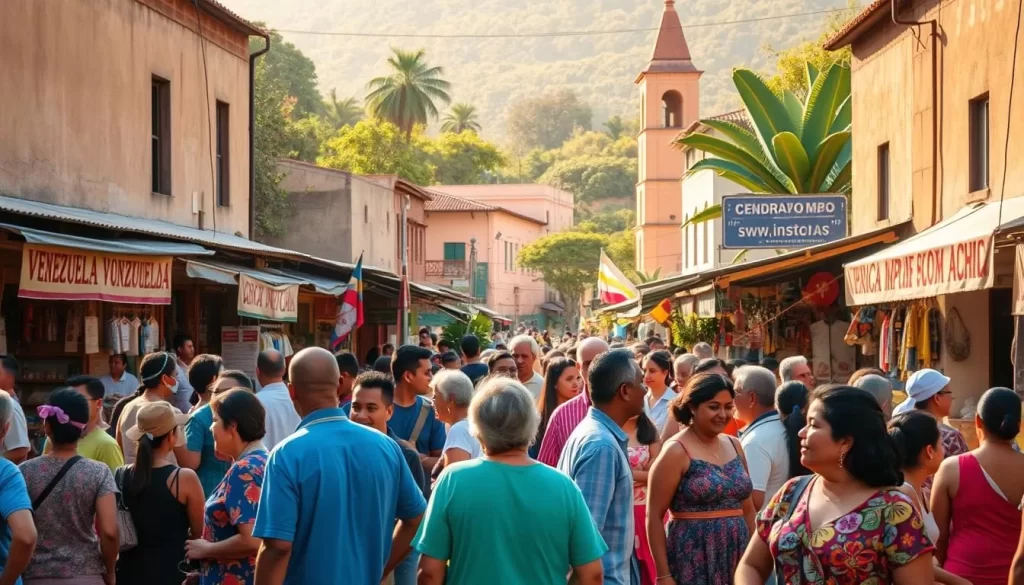
Language Variations in Urban vs. Rural Areas
In urban centers, the language spoken is often shaped by globalization and media. Words and phrases from other cultures seamlessly blend into everyday speech. For example, English terms are commonly used in professional settings. This trend reflects the cosmopolitan nature of cities like Caracas.
In rural regions, indigenous languages and traditional dialects thrive. Communities in areas like Zulia and Delta Amacuro maintain their linguistic roots, preserving centuries-old expressions. These variations are not just about words but also pronunciation and intonation, adding depth to the country’s linguistic landscape.
Understanding these differences offers a deeper connection to the population. Whether you’re in a bustling city or a quiet village, the way people speak reflects their unique identity. This diversity is a testament to the country’s rich cultural heritage.
For more insights into the linguistic diversity of South America, explore this detailed resource.
Language in Education, Tourism, and Professional Life
From classrooms to corporate offices, language is a cornerstone of communication and cultural connection. In this South American nation, the ability to communicate effectively opens doors to academic success, career growth, and enriching travel experiences. Whether you’re a student, professional, or tourist, mastering the local language can transform your interactions and deepen your understanding of the community.
Language Learning in Academic and Professional Settings
Educational programs here emphasize both Spanish and foreign languages. Approximately 15% of students are enrolled in programs that promote the learning of English and Portuguese. These initiatives prepare students for global opportunities and foster cultural exchange. The literacy rate is 97.1%, with Spanish as the primary language of instruction.
In professional settings, language skills are a key requirement for career advancement. A 2022 survey revealed that 30% of professionals consider knowledge of a second language essential. The demand for language training has surged, with a 40% increase in enrollment over the past five years. This trend highlights the growing importance of multilingualism in the workplace.
Language in Tourism and Community Engagement
In the tourism sector, Spanish is the predominant language, with English being the second most common. About 70% of tourists prefer destinations where they can communicate in Spanish, influencing local business practices. Training programs for service staff often include language courses to enhance visitor experiences.
Language also plays a vital role in preserving cultural heritage. The government promotes the use of indigenous languages in educational settings, leading to a 10% increase in instruction in rural areas. This effort strengthens community bonds and ensures the survival of traditional dialects.
| Setting | Language Focus | Impact |
|---|---|---|
| Education | Spanish, English, Portuguese | Prepares students for global opportunities |
| Professional | Second language proficiency | Enhances career growth |
| Tourism | Spanish, English | Improves visitor experiences |
Understanding the role of language in these sectors can help you navigate academic, professional, and travel experiences more effectively. For more insights into the educational system, explore this detailed resource.
Practical Tips for Language Learners Visiting Venezuela
Mastering the local language can transform your travel experience, making every interaction more meaningful. Whether you’re exploring bustling cities or serene regions, knowing a few key phrases can help you connect with the country’s vibrant culture. Here are some actionable tips to enhance your communication skills during your visit.
Essential Phrases to Know
Learning basic Spanish phrases tailored for Venezuelan usage is a great starting point. Here are some essential terms and greetings to help you navigate daily interactions:
- Hola: Hello
- Gracias: Thank you
- ¿Dónde está…?: Where is…?
- ¿Cuánto cuesta?: How much does it cost?
- Chévere: Cool or great
These phrases are widely used and will make your interactions smoother. For more detailed guidance, check out this Venezuelan Spanish tips resource.
Navigating Regional Dialects
Language variation is common across different regions. In urban areas like Caracas, the Spanish spoken is fast-paced and influenced by modern trends. In rural areas, traditional dialects and indigenous languages are more prevalent.
For example, in Zulia, you might hear “bichos” instead of “vaina” for “thing.” Understanding these differences can help you adapt your language use depending on where you are. This adaptability ensures smoother communication and a deeper connection with locals.
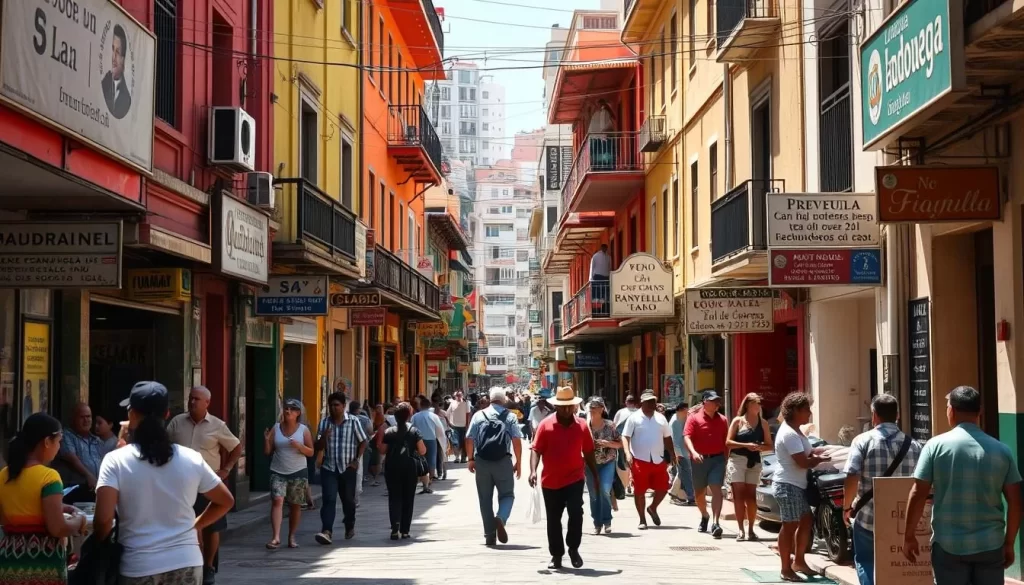
| Phrase | Meaning | Usage |
|---|---|---|
| Hola | Hello | Greeting |
| Gracias | Thank you | Polite expression |
| ¿Dónde está…? | Where is…? | Asking for directions |
| ¿Cuánto cuesta? | How much does it cost? | Inquiring about price |
| Chévere | Cool/Great | Expressing positivity |
By learning these phrases and understanding regional variation, you’ll be better equipped to engage with locals and immerse yourself in the culture. Whether you’re ordering food or asking for directions, these tips will make your trip more enjoyable.
Conclusion
The language of this South American nation is a vibrant reflection of its rich history and cultural diversity. Spanish, spoken by over 90% of the population, serves as a unifying force. Yet, the recognition of over 30 indigenous languages highlights the country’s commitment to preserving its heritage.
From the Caribbean influence on Spanish to the resilience of indigenous dialects, the language spoken here tells a story of evolution and connection. It bridges communities, shapes identities, and offers a window into the soul of the country.
Understanding this linguistic landscape is more than an academic pursuit—it’s a way to connect with the person behind the words. Whether you’re exploring urban centers or rural regions, the language you hear is a testament to the nation’s enduring spirit.
Embrace the journey of learning. It’s not just about words; it’s about understanding the world through the voices of its people. For more insights, explore this detailed resource.
The above is subject to change.
Check back often to TRAVEL.COM for the latest travel tips and deals.
